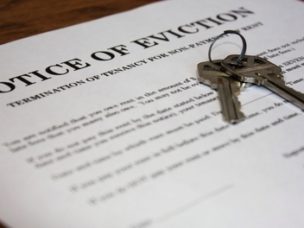Stay in the know
Subscribe to the Real Estate Blog and we’ll send you an email each time something new is posted.
Subscribe to the Real Estate Blog and we’ll send you an email each time something new is posted.
Blogs
Real Estate Blog
Unwary Landlord May Lose Right to Damages when Terminating Defaulting Tenant’s Lease
Commercial landlords should be aware of the April 30th SJC decision in 275 Washington Street Corp. v. Hudson River International, LLC, in which the Court left the landlord of a defaulting tenant with essentially no remedy because of the language of the post-termination indemnification clause in the landlord’s lease form. Far from expressing sympathy for the landlord, the SJC stated that a “landlord left without an adequate remedy following breach of the lease by a tenant has only itself to blame for entering into a lease that fails to provide such a remedy.”
In April of 2006, the landlord leased premises on Washington Street in downtown Boston to a tenant for 12 years for use as a dental practice. Just a year into the lease, the tenant closed its practice, made some intermittent monthly payments during the next 12 months but then notified the landlord that it was not going to make any further rent payments nor was it planning to return to the premises. As a result, in May of 2008, two years into the lease, the landlord terminated the lease and sued the tenant and the tenant’s guarantor for damages.
Under Massachusetts common law, once a lease is terminated for any reason, including a tenant’s default, the tenant is no longer liable to pay rent thereafter accruing unless there is an enforceable lease provision specifying damages due the landlord as a result of the termination. Accordingly, commercial lease lawyers in Massachusetts typically preserve a landlord’s right to damages by employing several common provisions. One provision may require the tenant to continue to pay landlord each month as damages the monthly rent required by the lease as if the lease had not been terminated. Other provisions require the tenant to pay as liquidated damages a lump sum which may involve, (i) a full acceleration of the remaining rent due under the lease, discounted to present value, (ii) a partial acceleration equal to the amount by which the aggregate rent due for the remaining lease term exceeds the current fair market rent for the remainder of the term, discounted to present value, or (iii) a dollar amount equal to the monthly rent due for a period of anywhere from 6 months to 2 years.
The landlord in this case had nothing in its lease other than a provision that, upon lease termination as a result of the tenant’s default, the tenant was to indemnify the landlord against all loss of rent and other payments which the landlord may incur by reason of such termination. But the SJC, upholding the Appeals Court ruling in this case, concluded that “[w]here the specific remedy is indemnification and no other time period is established as to when payment is due, … under our common law … the indemnified amount shall become due at the end of the original lease period.” The Court reasoned that indemnification is a contingent liability which can vary in amount because of possible future events, such as a fire or other casualty, reletting by the landlord, and defaults by replacement tenants, so that the full amount which the tenant must pay for the remainder of the term under an indemnification clause cannot be fully ascertained until the original lease term ends.
In this case, such a holding means that the landlord will have to wait until 2018 to determine its damages, a result leaving the landlord basically without a remedy. As the SJC said: “We recognize the possibility, as did the Appeals Court, that our common-law rule, which requires the landlord to wait until 2018 to determine post-termination damages under the indemnification clause, ‘may in effect make it impossible for the landlord to recover its true damages from this corporate tenant or guarantor, because of the protections afforded by legal processes, such as dissolution or bankruptcy’.”
The lessons to be learned from this harsh decision are these: First, if an indemnification clause is to be used by a landlord as a remedy for a tenant’s default, whether in addition to or in place of a liquidated damages clause, the provision must set forth a date or dates prior to the end of the lease term (e.g., upon the re-letting of the premises, or at the end of each month during what would have been the lease term) at which time the landlord’s indemnification claim is to be measured. Secondly and more importantly, a landlord must set forth in its lease detailed and specific contract damages for which the tenant will be liable when the lease is terminated by reason of the tenant’s default. These provisions should reflect the liquidated damages clause referred to above and should at a minimum grant to the landlord the benefit of its bargain damages that are typical under the common law governing contracts in general.



